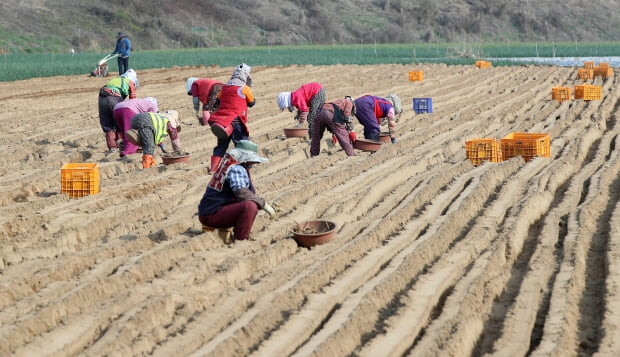
South Korea's agricultural sector is facing a critical demographic shift as projections indicate the farming population will plummet below the one million mark this year, according to the '2024 Survey on Agriculture, Forestry and Fisheries' released by Statistics Korea on Thursday. The survey, based on data from December 1st, 2023, reveals a concerning trend of declining farm households and a rapidly aging agricultural workforce, raising alarms about the future sustainability of the nation's food production and the vitality of rural communities.
The number of farm households stood at 974,000 last year, marking a 2.5% decrease (25,000 households) compared to the previous year. The definition of a farm household includes those directly cultivating at least 1,000 square meters of land or generating over 1.2 million won annually from the sale of self-produced agricultural, livestock, or forestry products, or the assessed value of their livestock.
The total farming population experienced an even sharper decline, falling to 2,004,000, an 85,000 person (4.1%) reduction from 2022. This continuous erosion of the farming population is attributed to a confluence of factors, including the persistent migration of younger generations to urban centers in pursuit of educational and employment opportunities, a subsequent decline in rural birth rates, the increasing number of elderly farmers retiring or abandoning farming due to age and health concerns, and shifts towards non-agricultural professions.
The historical trajectory of the farming population paints a stark picture of decline. From a peak of 14.42 million in 1970, the numbers steadily decreased to 10.83 million in 1980 and 6.66 million in 1990. The 4 million threshold was breached in 2001, followed by a drop below 3 million in 2011. The anticipated fall below 1 million this year signifies an accelerated rate of decline, prompting concerns that the farming population could dip below this symbolic milestone by the mid to late 2030s if current trends persist.
Adding to the gravity of the situation is the alarming rate of aging within the agricultural sector. As of last year, a staggering 55.8% (1,118,000 individuals) of the farming population was aged 65 or older. This represents a 3.2 percentage point increase from the previous year and is nearly three times the national average for the elderly population (19.2%). The proportion of elderly farmers has been on a steep upward trajectory, rising from 31.1% in 2010 to 52.6% in 2023, highlighting the dwindling presence of younger individuals in agriculture.
An age-wise breakdown of the farming population in 2023 further underscores this demographic imbalance. The largest segment, comprising 39.2% (785,000 people), was aged 70 or older. This was followed by those in their 60s (611,000) and 50s (281,000). Notably, while the number of farmers aged 70 and above saw a slight increase (2.3%), there were significant decreases in younger age groups, including those under 10 (21.0%), teenagers (14.4%), and those in their 40s (11.5%). This generational gap poses a significant challenge for the future of agricultural innovation, productivity, and the transfer of farming knowledge and skills.
Geographically, Gyeongbuk province recorded the highest number of farm households (163,000), followed by Jeonnam (139,000) and Chungnam (113,000). In terms of farm size, the majority (52.9%) operated on less than 0.5 hectares, indicating a prevalence of small-scale farming. Another 21.1% cultivated between 0.5 and 1 hectare. These smaller landholdings can present challenges in terms of efficiency and economies of scale.
The implications of a shrinking and aging farming population are far-reaching. A decline in the number of active farmers could lead to decreased agricultural output, potentially impacting food security and increasing reliance on imports. The lack of younger individuals entering the sector raises concerns about the long-term sustainability of farming practices and the adoption of modern technologies. Furthermore, the exodus of young people and the increasing proportion of elderly residents can exacerbate the decline of rural communities, leading to a shortage of essential services, social isolation, and the erosion of local economies and cultural heritage.
Experts and policymakers are increasingly focused on addressing this critical issue. Potential solutions include implementing policies to attract younger generations to agriculture through financial incentives, educational programs, and support for innovative farming technologies. Efforts to improve the quality of life and infrastructure in rural areas are also deemed crucial to making these communities more attractive to younger residents. Additionally, strategies to support aging farmers, such as providing assistance with labor-saving technologies and ensuring access to healthcare and social services, are essential to maintain agricultural production and the well-being of the existing farming population.
The anticipated drop of the farming population below one million this year serves as a stark reminder of the urgent need for comprehensive and effective measures to revitalize South Korea's agricultural sector and ensure the sustainability of its rural communities for future generations. The nation faces the critical task of not only preserving its agricultural heritage but also fostering a new generation of farmers equipped to meet the challenges of the 21st century.
[Copyright (c) Global Economic Times. All Rights Reserved.]






























